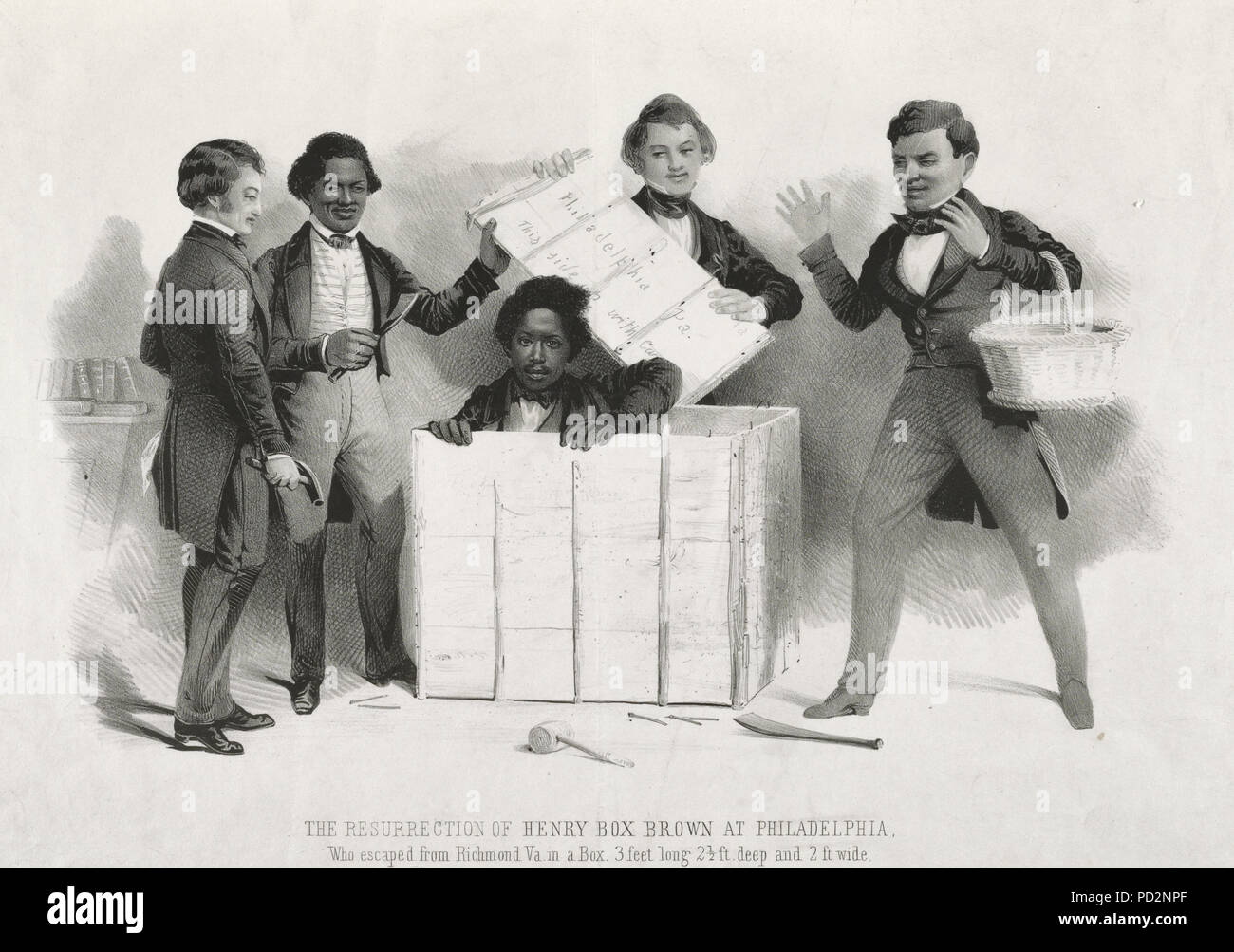The resurrection of Henry Box Brown at Philadelphia, who escaped from Richmond Va. in a bx 3 feet long 2 1/2 ft. deep and 2 ft wide. A somewhat comic yet sympathetic portrayal of the culminating episode in the flight of slave Henry Brown "who escaped from Richmond Va. in a Box 3 feet long, 2-1/2 ft. deep and 2 ft. wide." In the office of the Pennsylvania Anti-Slavery Society, the young Brown emerges from a crate as several figures, including Frederick Douglass (holding a claw hammer at left) look on. Details of Brown's escape, whereby he had himself shipped via Adams Express from Richmond to

Image details
Contributor:
Niday Picture Library / Alamy Stock PhotoImage ID:
PD2NPFFile size:
54.8 MB (2.7 MB Compressed download)Releases:
Model - no | Property - noDo I need a release?Dimensions:
5220 x 3670 px | 44.2 x 31.1 cm | 17.4 x 12.2 inches | 300dpiDate taken:
12 March 2011More information:
This image could have imperfections as it’s either historical or reportage.
The resurrection of Henry Box Brown at Philadelphia, who escaped from Richmond Va. in a bx 3 feet long 2 1/2 ft. deep and 2 ft wide. A somewhat comic yet sympathetic portrayal of the culminating episode in the flight of slave Henry Brown "who escaped from Richmond Va. in a Box 3 feet long, 2-1/2 ft. deep and 2 ft. wide." In the office of the Pennsylvania Anti-Slavery Society, the young Brown emerges from a crate as several figures, including Frederick Douglass (holding a claw hammer at left) look on. Details of Brown's escape, whereby he had himself shipped via Adams Express from Richmond to Philadelphia, were widely publicized in a narrative of his ordeal published under his own name in 1849. The box itself became an abolitionist metaphor for the inhumanity and spiritual suffocation of slavery.